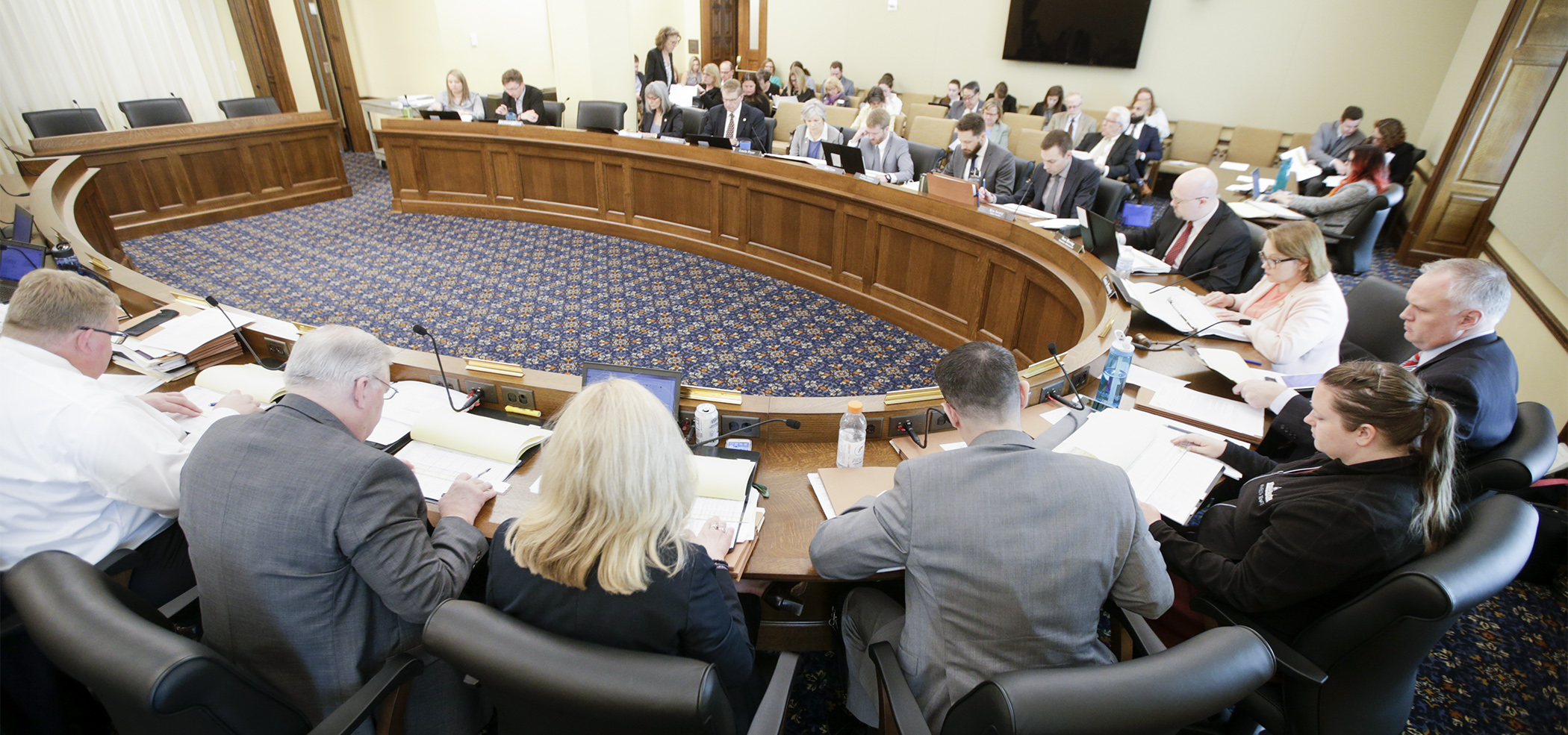More than $200 million apart, higher ed conference committee begins its work

It’s only 6 percent.
That may provide some comfort if you’re wondering how far apart the House and Senate are in their proposals to fund the state’s colleges, universities and financial aid programs. But if you identify the difference as $208.8 million, it sounds like a lot more.
One of the largest slices of the state funding pie is higher education, and, at its first meeting Tuesday, the conference committee entrusted with forging a funding proposal for it went through the spreadsheets and policy differences, hearing from some of the key potential recipients in public testimony.
While the House omnibus bill would provide $3.57 billion in higher education funding, the Senate version comes in at $3.36 billion. Here’s where the big differences lie:
- the Minnesota State system of colleges and universities would receive $1.6 billion from the House, $1.49 billion from the Senate, a difference of $112.5 million;
- the University of Minnesota would get $1.42 billion from the House, $1.33 billion from the Senate, the difference being $89.6 million;
- the Office of Higher Education – which is responsible for state financial aid programs -- would receive $544.4 million from the House, $537.6 million from the Senate, a difference of $6.8 million; and
- the fourth beneficiary of state higher education funding is the Mayo Foundation, on which the two bills agree: $2.7 million is appropriated to its medical education programs.
[MORE: View a spreadsheet of the differences]
What’s the big difference?
Minnesota State is where the conferees are really going to have to make some headway. The two sides are $15 million apart on workforce development scholarships -- but it’s actually the Senate that’s proposing the much larger figure. And, at first glance, it looks as if the Senate is proposing $12 million more than the House for what Minnesota State has identified as its top new funding priority: Replacing its 20-year-old data system.
But perhaps elements of that project will find their way into the $145 million more that the House proposes under the very broad category of “campus investments.” Negotiations will surely go into greater detail about which investments to fund and at what levels.
How about the University of Minnesota?
The bulk of the difference between the House and Senate proposals comes from the House’s $114 million that would make a tuition freeze possible. There’s no such language in the Senate bill. The Senate, meanwhile, offers to fund $24 million of the university’s request for operational funding that it’s proposed under the title, “Improving Lives Through Discovery and Innovation.”
Will financial aid packages grow?
When it comes to bridging the gap between the two bills, the Office of Higher Education’s state grant program doesn’t seem to be the problem. For the Senate actually beats the House in that category, providing about $8 million more. But the House proposes $4.4 million more in grants to teaching candidates, and $4 million for the MN Reconnect program (which helps adults who haven’t completed college return to campus) that isn’t in the Senate bill. The House bill also includes $2.5 million for Aspiring Minnesota Teachers of Color scholarships and $2 million in dual training competency grants, two programs that don’t appear in the Senate bill.
The conference committee is scheduled to meet again at 2 p.m. Wednesday and begin adopting provisions in the two bills that are the same or similar.
Related Articles
Search Session Daily
Advanced Search OptionsPriority Dailies
Ways and Means Committee OKs proposed $512 million supplemental budget on party-line vote
By Mike Cook Meeting more needs or fiscal irresponsibility is one way to sum up the differences among the two parties on a supplemental spending package a year after a $72 billion state budg...
Meeting more needs or fiscal irresponsibility is one way to sum up the differences among the two parties on a supplemental spending package a year after a $72 billion state budg...
Minnesota’s projected budget surplus balloons to $3.7 billion, but fiscal pressure still looms
By Rob Hubbard Just as Minnesota has experienced a warmer winter than usual, so has the state’s budget outlook warmed over the past few months.
On Thursday, Minnesota Management and Budget...
Just as Minnesota has experienced a warmer winter than usual, so has the state’s budget outlook warmed over the past few months.
On Thursday, Minnesota Management and Budget...